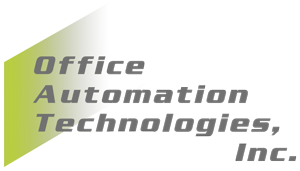In our previous article we introduced A.I and machine learning, looking at the basic definitions of each. Now let’s consider how these revolutionary technologies could spearhead your organisation’s digital transformation and help you become more agile, productive, secure and resilient.
There is no one-size-fits-all approach to deploying these technologies, however, let’s consider some common use scenarios that are applicable to businesses across a wide range of sectors.
AI in recruitment
When managing a small to medium-sized enterprise it can often feel like there just aren’t enough hours in the day. With daily operational pressures weighing you down so heavily, finding the time for additional pressures – such as recruiting new staff – can seem an impossible feat.
Artificial intelligence can be applied to the recruitment process in various ways to reduce the administrative burden and ultimately fast-track the entire process. For example, machine learning software can be applied to resumes, to pre-screen candidates prior to the interview stage. With the majority of job applicants typically failing to meet the qualification criteria for any given role, AI-powered resume screening saves the employer (you) a huge amount of time and helps hone in on the best and brightest talent much more quickly.
AI-capable software can also harness the data in applicant tracking systems and offer detailed insights into your talent pool. Automation can also be deployed in the recruitment workflow to expedite progress by initiating the next stage in the process as soon as the candidate completes their current task.
Not only does AI software save time in the recruitment process, it’s also not prone to the same biases as humans, resulting in a process that is fair and just.
AI in data security
The data landscapes of modern businesses are becoming increasingly complex, with a mixture of cloud and on-premise services coupled with a proliferation of endpoint devices provided to facilitate flexible working practices. The result is an environment that is difficult to manually safeguard against cyber threats, with a myriad of vulnerabilities presenting plentiful opportunities for cyber criminals.
AI and machine learning are now vital cyber defence tools, offering the ability to quickly survey vast quantities of data and detect irregular behaviour or the early indications of an imminent cyber-attack. These tools continuously improve; using data from previous incidents they are able to more effectively predict and take action against the threats of tomorrow.
Consider the threats Bots pose to data security. Designed to imitate human internet use, bots can be hard to distinguish from human users and it can also be hard to differentiate between good bots and bad bots. AI–powered software can be used to map out a typical user’s behaviour by using algorithms to analyse huge quantities of data to paint a picture of the average user journey. This can then be contrasted with real-time activity, in an effort to identify bots and take action against them before they’re able to wreak havoc.
AI in business intelligence
Harnessing the value of business data is essential to help business leaders and managers make informed, insight-driven business decisions. However, analysing and making sense of raw data can be a time-consuming and gruelling task to perform manually.
AI business intelligence and analysis capabilities allow for large-scale, real-time analysis of vast quantities of business data across multiple data stacks. This data is then drawn together to create meaningful visualisations which can help inform decision makers. AI comes into the equation by spotting trends and correlations hidden in data which would likely go unnoticed by a human operative unless deep, forensic analysis was being conducted.
The resulting AI-powered insights can be extremely commercially valuable. For example, AI could be used by a sales team to spot trends in consumer behaviour. Senior managers could also use the business insights to spot opportunities for cost savings, by identifying the wasteful use of resources.
AI in finance and accounts
Which vast quantities of data to handle and repetitive processes eating away at valuable staff hours, finance is perhaps the most suitable candidate for the adoption of AI and process automation technologies.
Generating invoices for example is a laborious time-intensive task that can be almost eliminated using AI powered invoice generating software. Using machine learning algorithms paired to optical character recognition technology, the AI-powered software can accurately draw data from an invoice and input it into the system in a fraction of the time it would take a human operative. The machine learning element of the technology also results in speed and accuracy improvements over time, with performance improvements occurring every time the task is carried out.
Conclusion
While the examples we’ve outlined above have the potential to transform workplace productivity in their respective settings, we’ve barely scratched the surface in terms of the scope of these new technologies. From finance to HR, the C-suite to frontline personnel, AI and its associated technologies are having, and will continue to have, a profound impact on the way we run our organisations. Offering game-changing data insights and previously unthinkable productivity gains, there’s never been a more appropriate time to introduce these compelling technologies to your organisation.
